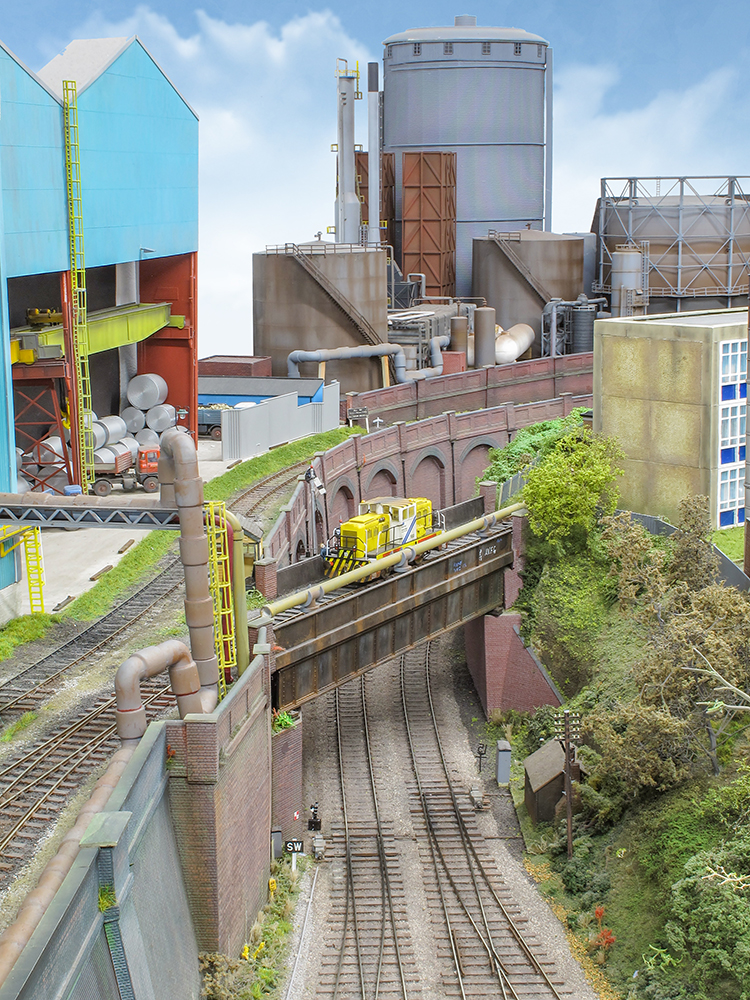24 June 2022
|
Add a dash of interest to your model railway and show it at its best with these ideas. Some are simple to add, others require more planning...
Tired of your layout looking the same? Perhaps its scenery is looking a little flat, or it's lacking a memorable feature? Maybe it's not being shown in its best light?
We all remember layouts for different reasons, but if you can't think of a reason why others might remember yours, perhaps it's time to look at it again with fresh eyes? Here are five instant improvements that can help make your layout stand out...
1. Water
There are a few ‘ready to pour’ products that make scenic model 'water' easier than ever. Some require heating and mixing, but generally they are all simple to use. Before these products, mainstays of modelling water were varnishes, resins and Perspex sheets. These options still work well, but there are now more specific products to model different types of water, like still water, canals, or waves.
The key to modelling water is patience. Allow each layer of ‘water’ to dry thoroughly before pouring or applying the next. There are many scenic features that modellers can buy to help complete a water scene, from ducks and fishing boats to lily pads and jetties.

A scene on David Wright's model, 'Ashover Light Railway' in OO9. The white-water effects and shimmer of the light are convincingly realistic. Fancy a dip?
2. A viaduct
Viaducts, by their nature, are large in the real world and are some of the grandest successes of the Victorians. On layouts, they’re impressive, but can take a lot of planning, skill and materials to produce; especially when scratch-built. Great kits are available, though, and even ready-to-plant options that take away any tricky construction work. You might want to modify these to get a more authentic look, or an appearance closer to the location you’re modelling.

We're not suggesting you'd need anything quite so complex as this setup on the OO gauge 'Davidson Parkway', though you have to admit, it carries visual impact!
3. A tunnel
When modelling a railway, how better a way to disguise the transition of a train passing from the scenic area to the ‘rest of the world’ (storage sidings) than via a tunnel? Most of us have attempted this effective illusion, whether the model is set amongst hills and valleys, or in a town centre. The best tunnels on layouts are considered during the planning stage. Adding a tunnel to an already-created layout can create difficulties in adapting existing baseboard heights, or changing the scenery above to blend with that already in place. Tunnels vary in style, shape and purpose. Scratch-building is an option, and particularly useful if modelling a specific tunnel entrance that can’t be easily adapted from the wealth of tunnel portals now available. Luckily, for modellers who don’t have scratch-building skills, portals can be purchased from your local model shop or online, for 7mm:1ft, 4mm:1ft and 2mm:1ft scales.

Where did they come from? Where are they going? We'll never know – it's all a bit dark in that tunnel, isn't it?
4. A signal box
Once a familiar sight throughout the rail network, when in 1948 up to 10,000 mechanical boxes existed, localised control has been gradually rendered obsolete since the introduction of 'Power Boxes'. However, for the modeller who prefers a traditional approach, the scope is vast, the signal box being one of the most defining factors when identifying which railway company originally built the line. The good news is that there are many model options, whether you’re interested in building a kit, or buying something ready-to-plant, covering most eras and locations.

An illuminated signal box interior with shiny bells and polished lever frame will create intrigue, but so too can an abandoned one, as pictured. See how this kit was built here.
5. Better lighting
A layout can be visually helped by good lighting – especially at an exhibition, but also at home. If you can’t see your layout well, you’ll never see your model at its best. Lighting can add realism and character to your buildings, locomotives and scenic work. There’s lots of advice around to help decide what route to go down, and whether you’re looking for a lighting rig to light your entire layout, or adding LEDs inside of your model buildings, there are different things to consider and products to look at.

Better layout lighting is something that BRM's photographer Andy York will thank any layout owner for, but it also ensures that colours on your layout can be seen correctly. Avoid unrealistic shadows, too.
Which would be your five features to add instant impact to any layout? Let us know in the comments below, or email us at [email protected]







